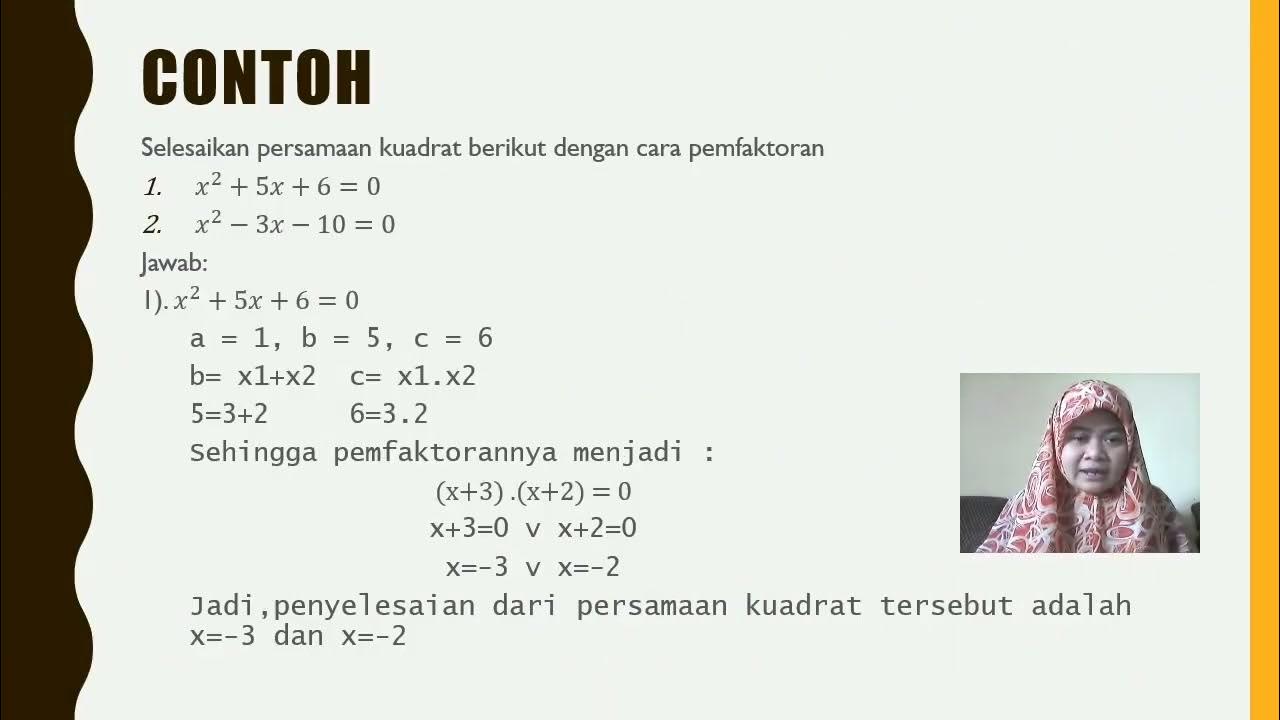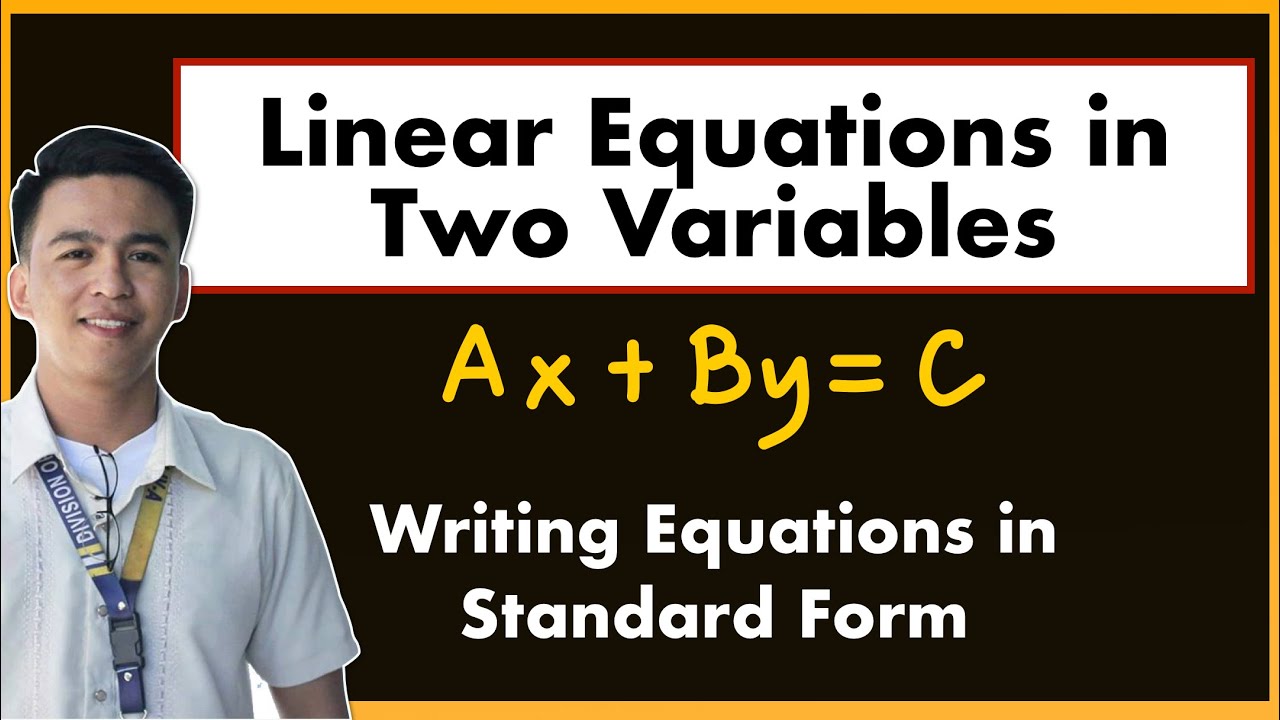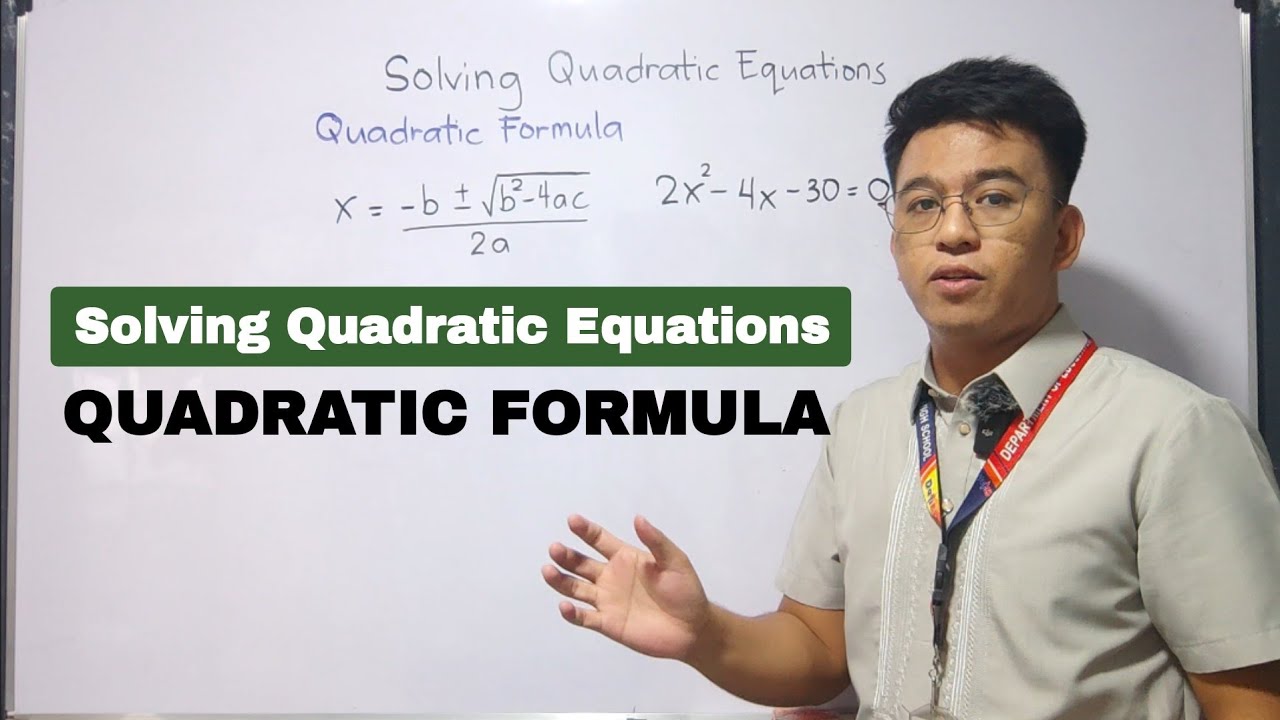Matematika Kelas 9 : Persamaan Kuadrat (part 1 Bentuk Umum)
Summary
TLDRIn this engaging mathematics lesson for ninth graders, the instructor introduces quadratic equations, detailing their general form and the significance of coefficients A, B, and C. The video outlines how to identify these coefficients through various examples, including scenarios where coefficients may not be explicitly stated. The lesson also emphasizes that quadratic equations can involve different variables beyond X. This foundational knowledge prepares students for more complex topics, fostering a deeper understanding of mathematical principles.
Takeaways
- 😀 The standard form of a quadratic equation is ax² + bx + c = 0, where a ≠ 0.
- 😀 The coefficient a is associated with x², b is for x, and c is a constant.
- 😀 If a = 0, the equation is no longer quadratic.
- 😀 Examples illustrate how to identify a, b, and c in various quadratic equations.
- 😀 If a quadratic equation lacks a constant term, c is considered to be 0.
- 😀 The equation can use variables other than x, such as t or m, and still be classified as quadratic.
- 😀 The coefficients can also be expressed as variables, not just numerical values.
- 😀 Rearranging the equation is sometimes necessary to fit the standard form.
- 😀 Recognizing the terms in a quadratic equation helps in identifying the coefficients correctly.
- 😀 The next video will cover how to determine the roots of a quadratic equation.
Q & A
What is the general form of a quadratic equation?
-The general form of a quadratic equation is ax² + bx + c = 0, where a, b, and c are constants and a ≠ 0.
Why is it important that 'a' in a quadratic equation cannot be zero?
-If 'a' is zero, the equation becomes linear rather than quadratic, meaning it no longer has the x² term.
In the equation 3x² + 8x + 4 = 0, what are the values of a, b, and c?
-In this equation, a = 3, b = 8, and c = 4.
How can we identify the coefficients in a quadratic equation?
-The coefficient a is the number in front of x², b is the coefficient of x, and c is the constant term that does not have a variable.
What happens if the quadratic equation is written as 2x² + 5x = 0?
-This equation can be rewritten as 2x² + 5x + 0 = 0, which shows that a = 2, b = 5, and c = 0.
What do we conclude if a quadratic equation lacks a term for b?
-If there is no b term, it means b = 0, and the equation is still a valid quadratic equation.
Can a quadratic equation use variables other than x?
-Yes, a quadratic equation can use any variable, such as t or m, as long as it follows the same general form.
How do you determine the coefficients when they are expressed in terms of variables?
-Identify the terms in the form ax² + bx + c, and assign values accordingly, treating variables as constants in that context.
What is an example of a quadratic equation with variable coefficients?
-An example is mx² - (2m + 1)x + (m - 3) = 0, where a = m, b = - (2m + 1), and c = m - 3.
What is the next topic to be covered in the series after understanding the general form of quadratic equations?
-The next topic will focus on determining the roots (or solutions) of quadratic equations.
Outlines

This section is available to paid users only. Please upgrade to access this part.
Upgrade NowMindmap

This section is available to paid users only. Please upgrade to access this part.
Upgrade NowKeywords

This section is available to paid users only. Please upgrade to access this part.
Upgrade NowHighlights

This section is available to paid users only. Please upgrade to access this part.
Upgrade NowTranscripts

This section is available to paid users only. Please upgrade to access this part.
Upgrade NowBrowse More Related Video

Persamaan Kuadrat part 1

ILLUSTRATING QUADRATIC EQUATIONS || GRADE 9 MATHEMATICS Q1

Writing a Quadratic Function from Points (Example)

Illustrating Linear Equations in Two Vairables | Writing Linear Equations in Standard Form

Solving Quadratic Equations using Quadratic Formula

Intro to Quadratic Functions (Relations) - Nerdstudy
5.0 / 5 (0 votes)